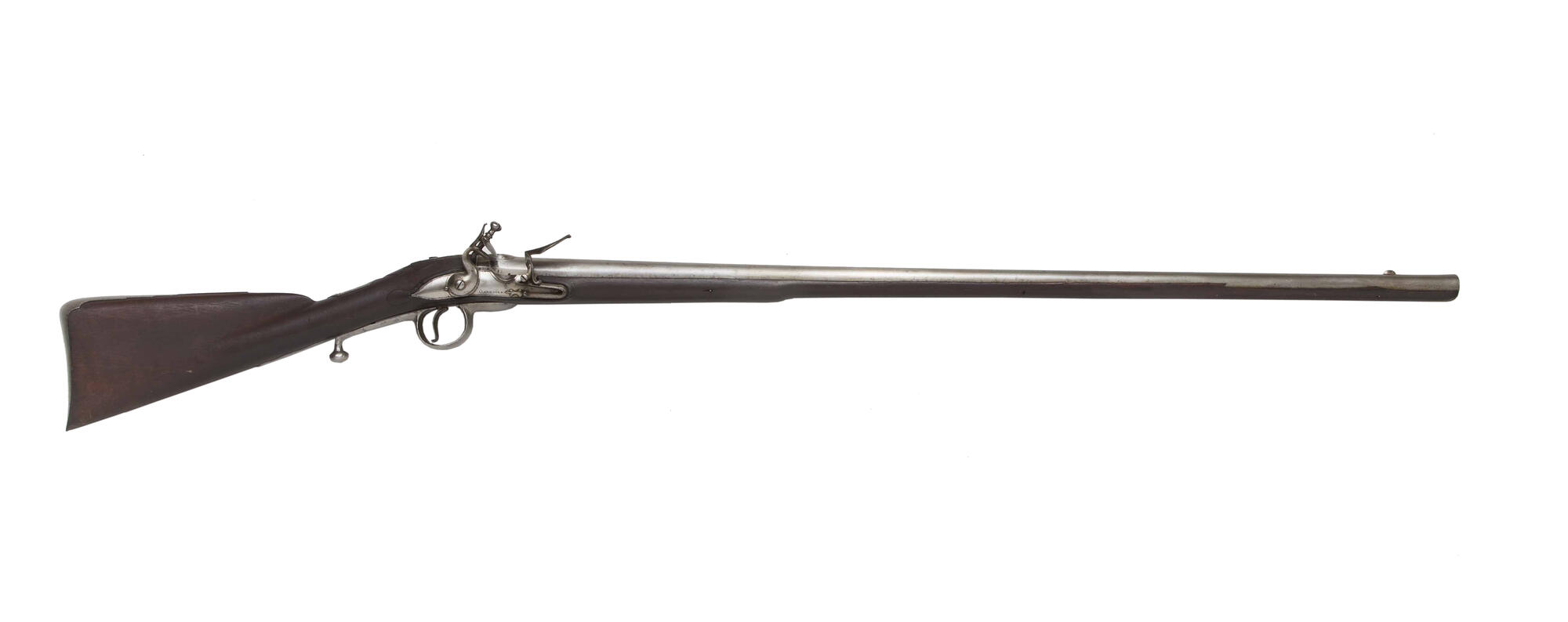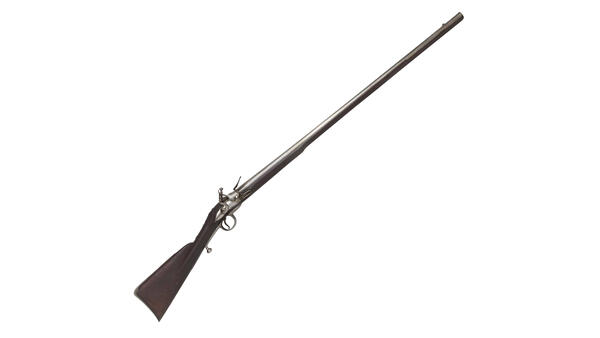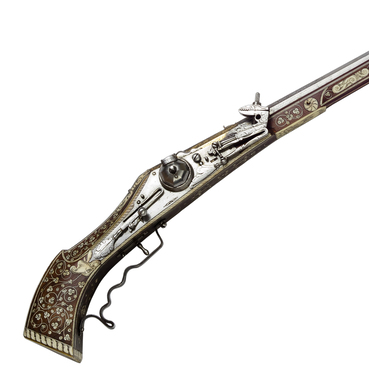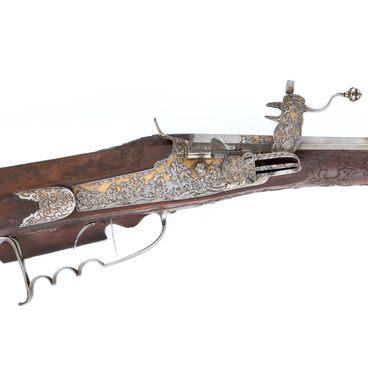The flintlock breech-loading gun from the Gatchina Palace and Estate Museum was made in England in the second quarter of the 18th century by the London gunsmith Joseph Clarkson. The gun is fitted with the La Chaumette screw plug system. Its unusual construction allowed to save time and made the process of loading easier compared to standard guns of that time.
Moreover, there was no need for a ramrod. In order to load the gun, one just had to turn the trigger guard made in the form of a handle and thus open a hole in the upper part of the breech. The hole was used to load a charge and a projectile. Then the hole was closed by turning the handle in the opposite direction. The loading could be done in any situation or position, for example with the shooter lying on his back, which was almost impossible for standard guns of that time.
The construction was invented by Isaac de La Chaumette who also tried to apply his inventive abilities in other spheres, though without much success. Most guns of this type were manufactured in England where La Chaumette moved from France in the 1710s. The barrel of the gun is made of forged iron. It is round in section and smoothly bored. There is a female-threaded vertical hole going through the breech end. The hole is closed with a threaded plug from below. On the upper side of the barrel around the hole there is an inscription: ‘Clarkson Londini’. To the left of the hole there are three marks: two oval marks of the London company of gun makers (the letter ‘V’ under a crown and the letters ‘GP’ under a crown) and between them — a personal mark of the gunsmith (but it is worn away and cannot be read).
The lower plane has three eyelets for barrel pins. The gun has a French type flintlock mechanism. The surfaces of the lock plate and the hammer are curved and the lock plate has an engraved inscription: ‘Clarkson’. Despite its obvious benefits the La Chaumette system had a considerable drawback, which prevented its wide spread. Powder fouling, which appeared as a result of shooting, built up on the threads of the plug used to close the hole in the breech end of the barrel. If the fouling was not quickly cleaned away, it turned into a hard substance which made it almost impossible to close the screw plug.
That is why guns with the La Chaumette screw plug system were often furnished with a ramrod so that shooters could load their guns using the standard method when the screw plug stopped working. Half a century later Patrick Ferguson, an officer of the British Army, managed to fix this problem and flintlock rifles of his construction were adopted for the use in the army though with certain limitations.



